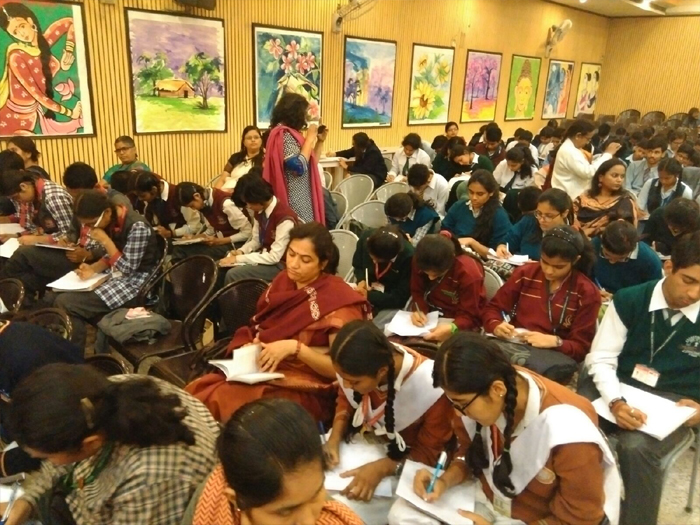Young Journalists' Meet
A journalists' meet was organised by The Hindu on 26th November 2015 at Bal Bharti School, Karol Bagh. About 200 students from 46 schools across Delhi participated in the event. Saruby Sharma (X-D) and Anushka Anand (XI-C) attended the meet from our School.They were accompanied by Ms. Prakriti Mohapatra.
Mr. V Sudarshan, Senior Editor of The Hindu, was the speaker. He has been a journalist for the past 15 years and has even worked at The Indian Express and the Outlook. He defined a newspaper, our daily essential, as a sum total of the days gossip! . He began by interacting with the students and asking, what they read about in the newspaper, and which magazines their school published. I immediately responded and told him that I read the national and international news everyday, and occasionally, the editorial too. I even told him how our School published and circulated a magazine every year, covering different subjects: Science, Languages, Social Science and Technology. I told him I had edited the School science magazine Aarogya this year.
[gallery link="file" columns="2"]
He discussed journalism as a career. He told us that being a journalist was quite time-consuming. He spent more than two hours each morning reading five newspapers, to compare reports! There were meetings all the time, the schedule was hectic. There was a lot of pressure and deadlines. But journalism toughens your heart, he said, as you have to get out the details whatever be the situation- a massacre, a murder, or an epidemic! One cannot stop. A journalist can bring national attention to unsolved or neglected issues. Another plus point of the vocation is that one can write books. Mr. Sudarshan has written two books- Anatomy of an Abduction and Drift.
The speaker also gave us tips on writing reports. According to him, a report should always answer five questions- What? When? Where? How? Why? A report should have a catchy, attractive and informative headline and should be easily understood. Journalists not only have a time limit, but also a word limit. The most important part is that one should stay focused on the story and not deviate to unimportant details. The readers should be kept 'hooked' till the end.
There was a question/ answer session at the end. Mr. Sudarshan heard all our questions patiently and answered them briefly, citing examples from his life.
In the end, we were asked to summarise the session in 15 minutes and in a hundred words. Mr. Sudarshan told us he would read through all the reports and the top 3 would be rewarded.
I end my report with the line - 'Since print journalism has a time and word limit, I shall stop now!' It was indeed an interactive and enlightening meet for aspiring journalists such as us.
Saruby Sharma, X-D.













